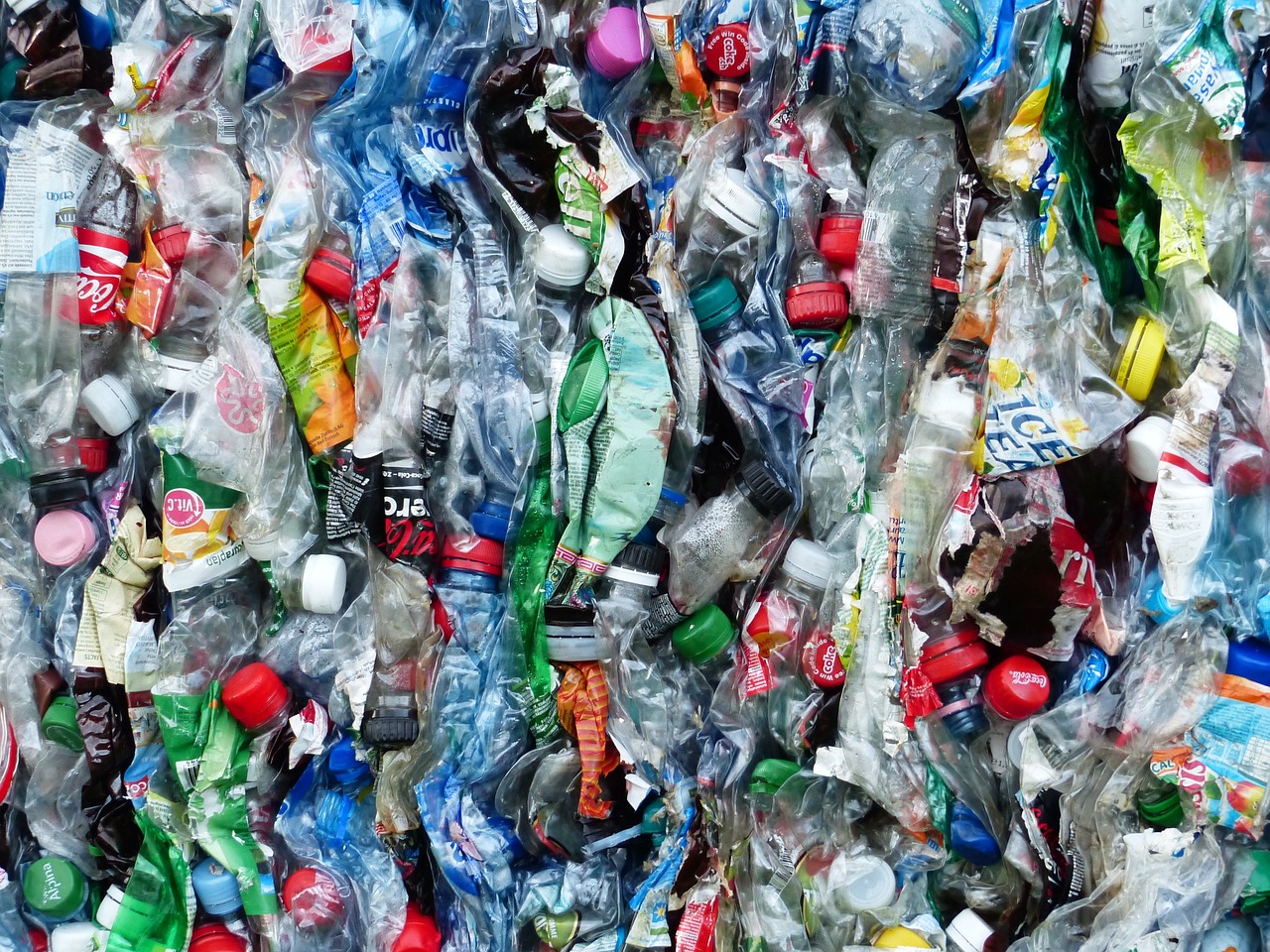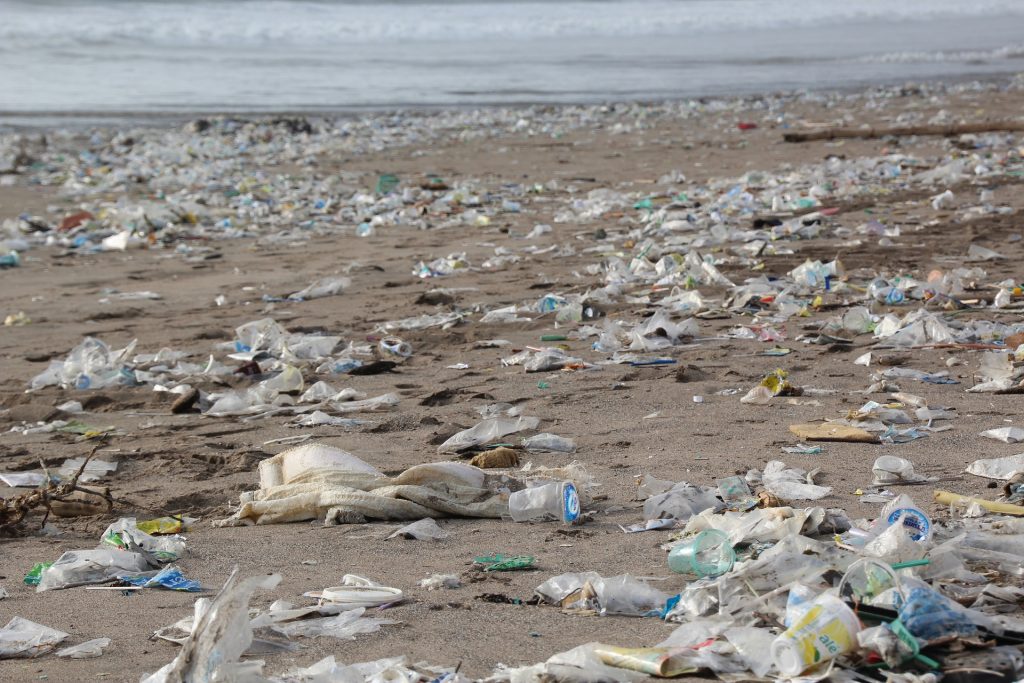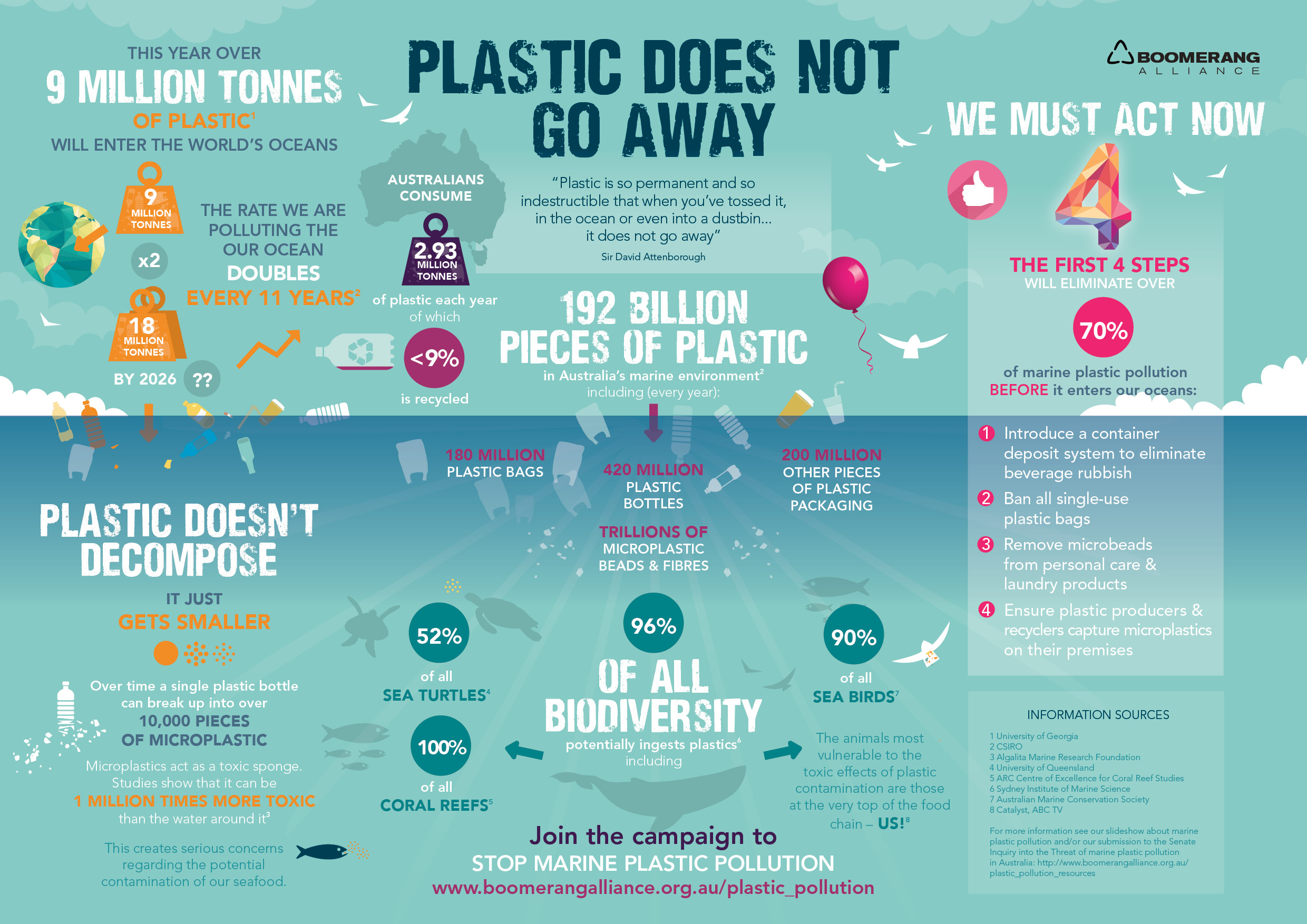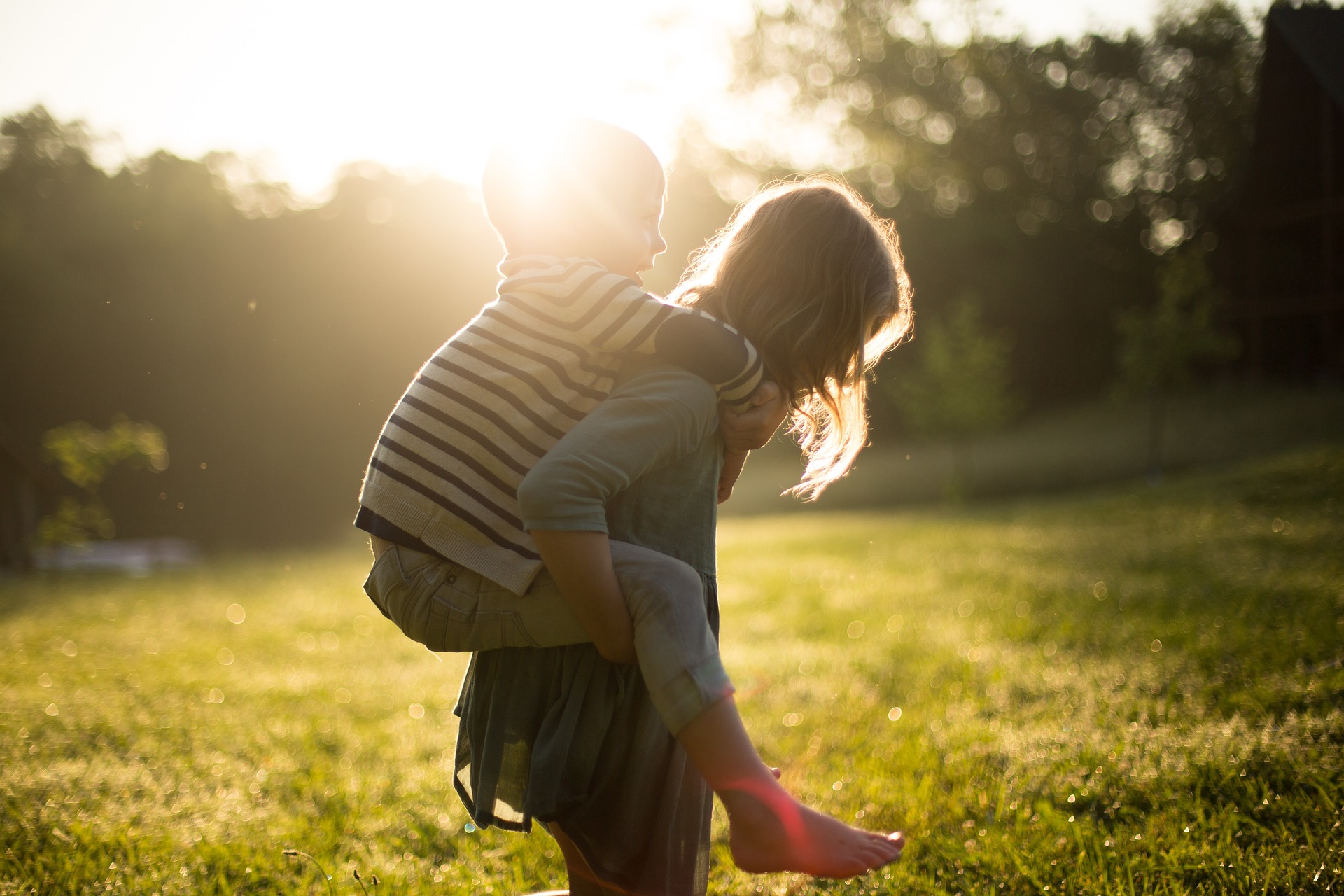Single-use plastic is what it says:
Plastic that’s been designed to be used once only, then thrown away.
What a waste!
We all know it’s a huge problem.
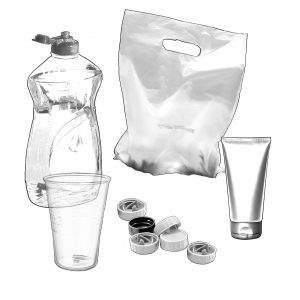
Billions of tons of waste plastic lies about as litter, clogs up the oceans, and animals get caught and injured or killed by it.
Plus plastic is made from fossil fuels (oil) and takes decades or centuries to decompose…
And even then, it doesn’t fully decompose – it simply breaks down into smaller and smaller pieces until we have plastic micro-particles in the soil, water, air, and inside animals and humans!
Examples of single-use plastic are everywhere, in lots of things we buy everyday.
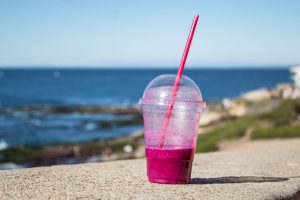 How many of these do you use?
How many of these do you use?
- Plastic water bottles and disposable cups for coffee, soft drinks or water,
- Cling film or plastic wrappings around fresh fruit and vegetables or prepared foods like fresh pizza,
- Plastic packaging like six-pack rings for packs of canned drinks, or sealed around other packaging like teabag boxes,
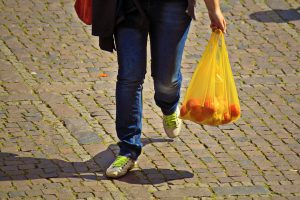 Plastic straws and plastic spoons, knives and forks,
Plastic straws and plastic spoons, knives and forks,- Plastic containers like yoghurt pots, laundry liquid bottles, toiletry tubes and bottles, and take-away/fast food containers,
- And of course – plastic bags like supermarket bags, carrier bags or shopping bags from stores.
So what can we do about it?
Here’s 5 things you can do right now, to reduce your “plastic footprint” on planet Earth:
1. We can’t always help buying plastic packaging for some things. So if you do, save the plastic bags or wraps. Then wash them if necessary and make sure to use them again.
2. Sometimes when you’re out, you can’t find a recycling bin for your waste, so take it back home and recycle it. Don’t put recyclable plastic waste into a normal rubbish/garbage bin, because it’ll unnecessarily end up in landfill, around an animal’s neck, or in the oceans.
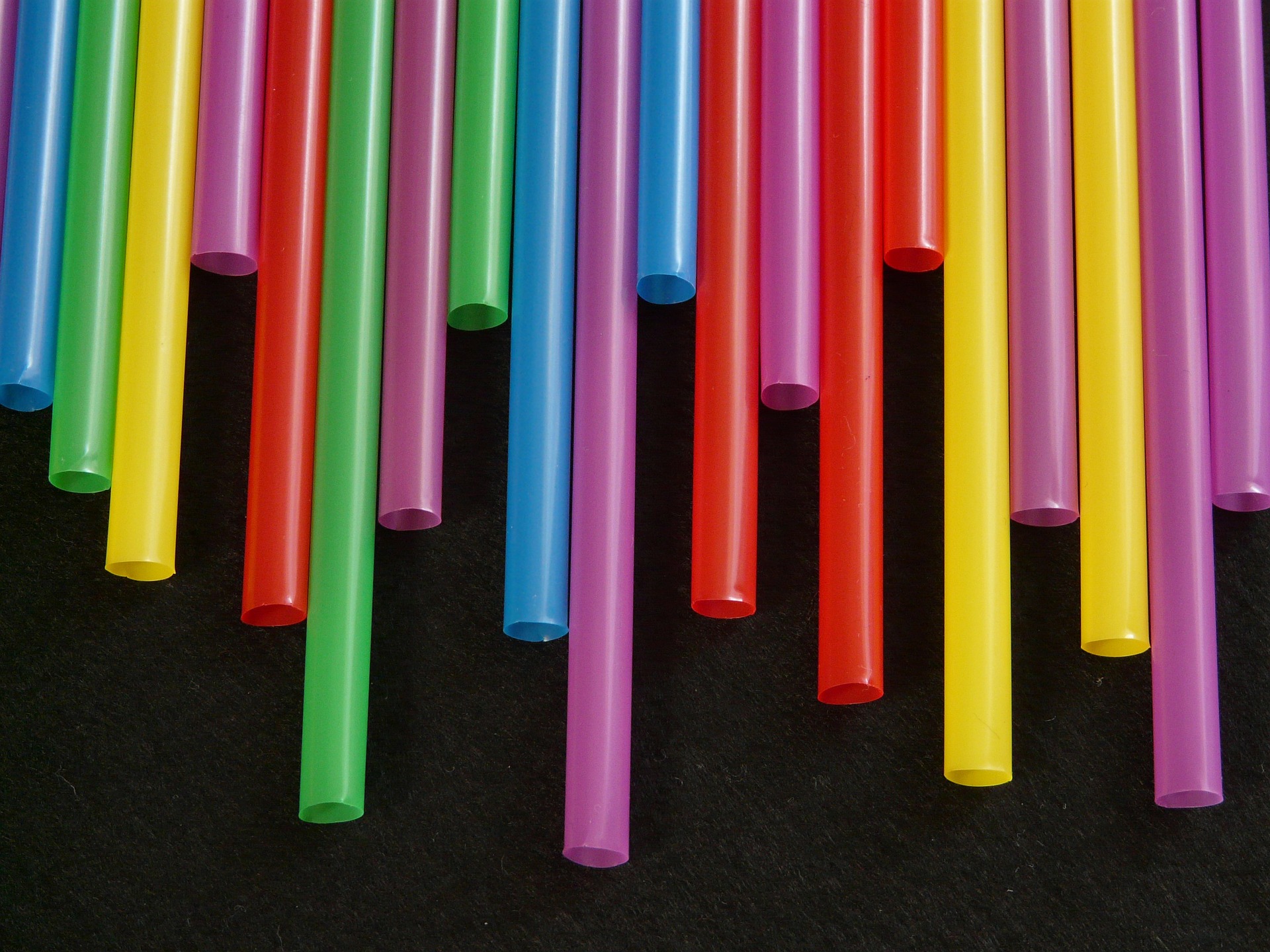
3. Plan ahead – take a reusable cup and your own set of reusable cutlery, including a reusable straw, with you.
4. Use your own reusable fabric shopping bags (even reusable plastic shopping bags can end up as waste).
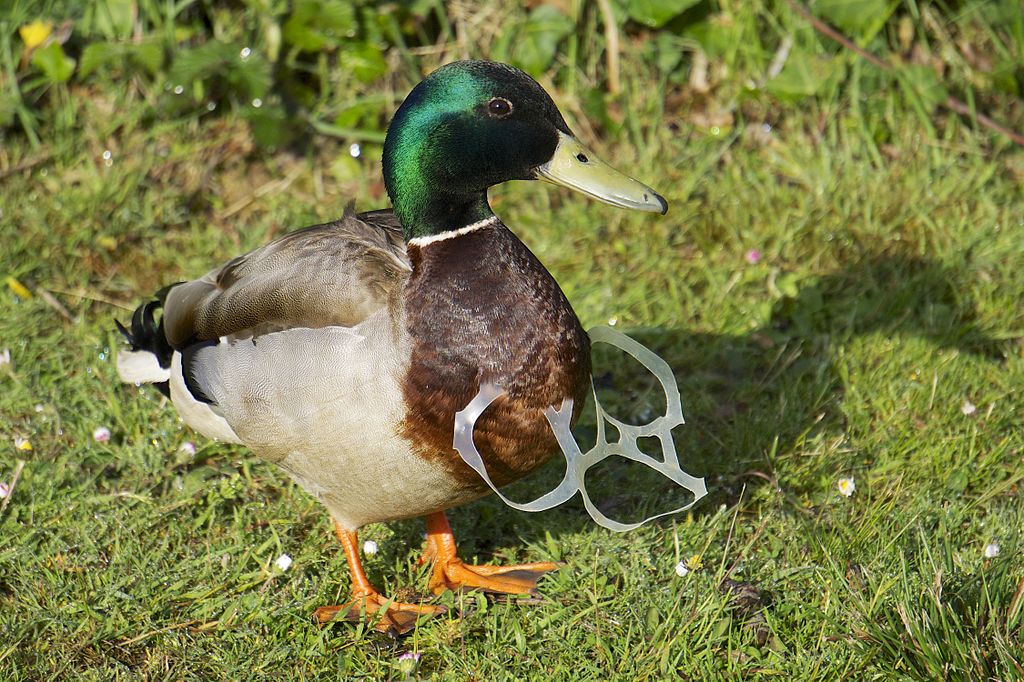
5. Think of our wildlife – cut up plastic six-pack rings, tear open plastic bags, cut straws up and open or tear up any packaging that might get caught around a bird’s foot, a fox’s head, a sea turtle’s flipper or a seal’s nose, before you discard the plastic (even if you’re recycling it).
Speak up and start conversations!
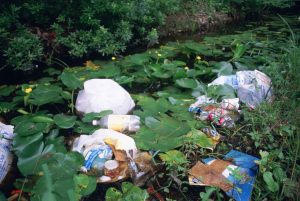 When you’re paying for your food and groceries, make a comment to the staff, talk to fellow shoppers, or complain to managers about all the unnecessary plastic packaging.
When you’re paying for your food and groceries, make a comment to the staff, talk to fellow shoppers, or complain to managers about all the unnecessary plastic packaging.
Some people even unwrap their food and groceries while still in the store, and leave their plastic waste there – what better way to get the large supermarkets talking to manufacturers about reducing excess plastic?
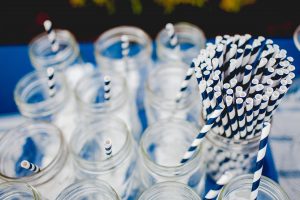
Say no in restaurants and coffee shops – is it really necessary to have a plastic lid and plastic straw with your drink?
When you’re out and about, be seen using your own reusable coffee cup, recycled water bottle, paper straw and washable cutlery – and talk to others about it. Many coffee shops offer a discount if you use your own mug or cup rather than one of theirs, so it’ll save you money too.
Talk about plastics, so people are thinking about the problem and solutions. For example, here’s an interesting article about scientists discovering a new bacteria strain that feeds on polyurethane plastics.
It’s a challenge, but worth it.
![By NASA/Apollo 17 crew; taken by either Harrison Schmitt or Ron Evans [Public domain], via Wikimedia Commons](https://kathrynrosenewey.com/wp-content/uploads/2018/07/1023px-The_Earth_seen_from_Apollo_17-300x300.jpg)
Challenge yourself and your family and friends to use less single-use plastic.
Zero-waste challenges like Zero Waste Life, Apps like MyLittlePlasticFootprint.org, and Social Media groups like PlasticWasteInOceans or PlasticFreeSupport are an informative and fun way to get people involved and motivated.
Here is an infographic from boomerangalliance.org.au – all about plastic pollution around Australia:
Why not investigate the issue of plastic pollution further with this interactive worksheet all about plastics, pollution and solutions?
Let’s all start taking action today. Here’s to a plastic-free world!
Sources:
https://www.waterdocs.ca/water-talk/2017/12/19/8-single-use-plastic-items-you-can-quit-right-now
https://www.des.nh.gov/organization/divisions/water/wmb/coastal/trash/documents/marine_debris.pdf
https://www.onegreenplanet.org/environment/how-plastic-is-harming-animals-the-planet-and-us/
http://www.onegreenplanet.org/crushplastic
Photo of plastic bottles by Hans of Pixabay.com.
Photo of litter on beach by hhach of Pixabay.com.
Photo of pink drink in transparent plastic cup by Alexander Kim from Pexels.
Photo of person carrying yellow plastic bag by cocoparisienne of Pixabay.com.
Picture of different types of single-use plastics by maria_johansson of Pixabay.com.
Photo of colourful straws by Hans Braxmeier of Pixabay.com.
Photo of Mallard duck with plastic by Ian Kirk from Broadstone, Dorset, UK (Please take your litter home!Uploaded by Foerster) [CC BY 2.0 (https://creativecommons.org/licenses/by/2.0)], via Wikimedia Commons.
Photo of litter in pond by Hagerty Ryan, USFWS of Pixnio.com.
Photo of drinks glasses with reusable straws by StockSnap of Pixabay.com.
Photo of planet Earth by NASA/Apollo 17 crew; taken by either Harrison Schmitt or Ron Evans [Public domain], via Wikimedia Commons.
Infographic “Plastic Does Not Go Away” from https://d3n8a8pro7vhmx.cloudfront.net/boomerangalliance/pages/231/attachments/original/1464851954/MicroPlastic-Infographic-Final-2016.jpg?1464851954.

